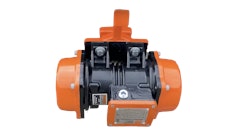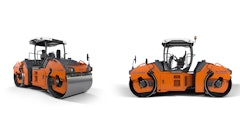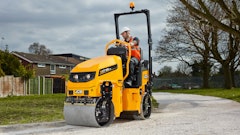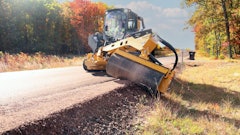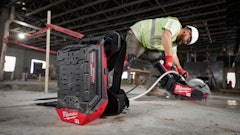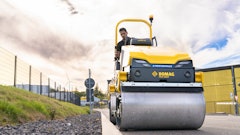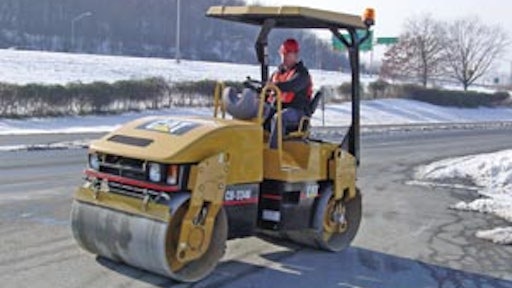
While you're wrapped up in a warm blanket, sitting on the couch sipping hot tea this winter, cold winds will be whipping around your ride-on rollers outside. So it's important that you properly prepare these machines for the elements they will face during off-season storage.
Protection from the chill
Water exposed to freezing temperatures will turn into ice and expand, a process that will wreak havoc on any water components of your roller. Prior to storage, empty all water from tanks, hoses, filters and pumps to avoid ice damage.
Once the water system is drained, there are a few steps you should take to properly protect it from cold. "Run bleach through it to kill any algae," advises John Golka, product support manager with Sakai America. "Then run RV-style antifreeze through it, and drain the system as much as possible."
"Use propylene glycol-based antifreezes because they're environmentally friendly and it's less harmful to animals," suggests Jeff Fox at Ammann America Inc.
Fox also recommends checking your radiator. "If you have a water-cooled engine, you want to use a hydrometer to inspect the antifreeze and ensure you have the proper protection for the lowest temperatures in your area," he states.
Next, take steps to protect other components of the roller from exposure. Nono Bauleth, service manager with Dynapac, advises covering the air cleaner intake and exhaust pipe with plastic or tape to prevent moisture from entering the engine.
He also suggests lubricating the machine to protect it from corrosion. "On machines equipped with axles, change the axle lubricating oils," he says. "Grease all steering hitch and steering cylinder grease points, cover the hydraulic cylinder's exposed rods with grease, grease hinges of all doors and grease both ends of the forward/reverse control."
Also protect any machine accessories that could be damaged by freezing temperatures. "If appropriate, remove the spray bars and keep them inside," Fox says. "Put some type of protection on any plastic parts, like the seat. You might want to protect the entire machine with a tarp if it's going to be in snow pack."
Consider washing down the roller before storage. "That way, if there are any leaks over the winter, it will make it easier for you to spot them. You also want to avoid any mud icing up around valves," Golka says.
Pneumatic-tired rollers require some added attention. "Make sure the tire inflation pressure is correct before storage. We also recommend taking the load off the tires by putting the axles up on blocks," says Tohr Vorvick, technical information manager for Caterpillar Global Paving. "If you're storing this piece of equipment outside, cover the tires with black plastic to prevent rubber degradation from the sun's rays. If you're parking outside, park the machine on wooden planks, clean concrete or asphalt as opposed to the bare ground, which the tires could freeze to."
Routine storage advice
Aside from taking steps to protect your roller from the cold, you need to take the usual long-term storage precautions. The roller manufacturer will supply recommendations in the owner's manual for protecting metal components from corrosion, including the inside of the engine.
Consider changing the roller's fluids and filters prior to long-term storage. Some individuals may prefer to change fluids in the spring instead. If so, make sure the roller's fluid levels are full before placing it in storage.
Battery care is also a necessity. "The battery should be fully charged, and I would recommend removing it from the machine and storing it in a warm spot over the winter," Golka says. "If the battery discharges and you try to start the roller in the spring on that poor battery, you can blow out the alternator."
If you're charging and storing batteries indoors, make sure they are in a properly ventilated area, Vorvick adds, noting batteries can produce hydrogen, which can collect and become dangerous.
Annual maintenance
While you're going through the steps to prepare your roller for a winter break, it's a good time to perform some annual maintenance so the machine is ready to go in the spring.
"Check the hydraulic system thoroughly; repair all leaks and replace the necessary hoses," Bauleth says. "Also check the electrical system thoroughly and restore it to its original condition. Replace all missing bolts and nuts and check all control cables."
Golka recommends a thorough inspection of machine operations. "Do an operational check, which ensures that all components and functions are working properly, such as the vibration system, scraper bar, RPM and travel speed," he says. "After completing your operational check, make a list of things that need to be worked on over the winter."
After the thaw
If you did your maintenance properly before storing your machine, you should have few problems when it comes time to start the roller up again in the spring.
Do a visual inspection of the machine, looking for any dry-rot damage or moisture ingress. Also check for any leaks that may have happened over the storage period, and repair these areas as necessary. It is also a good idea to check for any animals or insects that may have made your equipment "home" over the winter.
After the visual inspection, getting things running again should be pretty quick and easy. "Refresh all the fluids, test the battery before you try to start the engine and do another operational check to make sure everything is working," says Golka.













